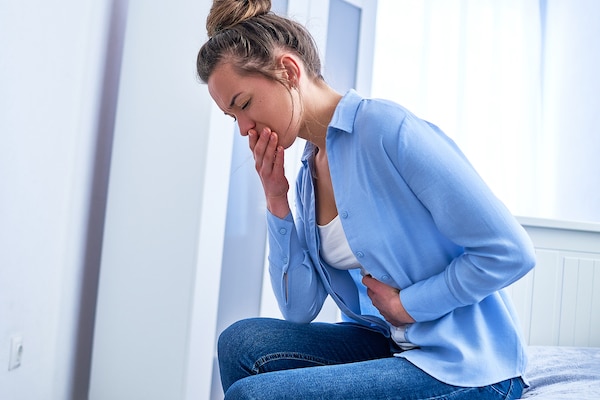After Arthroscopic Shoulder Surgery

GENERAL
A surgical arthroscopic or open method was performed on your shoulder.
The entry ports on your shoulder are designed for procedures such as identifying the problem and “shaving down” bone spurs, repairing torn tendons (rotator cuff), and removing a calcified AC joint (a small but problematic joint at the end of the collarbone), meaning: It is normal to experience some discomfort and/or pain in the first few days after this procedure. Everyone responds to and describes pain differently, but generally
The prescribed painkillers should be sufficient to control your pain. However, severe or increasing pain, especially in the first few days, may be a reason to consult your doctor before your scheduled appointment.
OTHER REASONS FOR SEEKING MEDICAL ATTENTION BEFORE THE SCHEDULED APPOINTMENT:
Fever higher than 38.5º Celsius. This may be NORMAL within the first 24-48 hours after general anesthesia. However, if the fever starts later or persists for more than 48 hours, it should be a reason for seeking medical attention again.
NAUSEA is commonly experienced in the first few hours after general anesthesia.
If severe nausea persists or becomes incapacitating, it is recommended to consume relatively soft foods in the first few days after surgery to reduce the chances of nausea.
SWELLING around the shoulder is related to the accumulation of fluid from the arthroscopic procedure and usually resolves within the first 24-48 hours.

The initial surgical dressing may cause tightness. If necessary, the dressing can be replaced with a dry one. If swelling continues, a visit may be required before your scheduled appointment.
Some bleeding around the shoulder is common approximately 48 hours after the removal of bone spurs. This bleeding is gravity-related and can turn into bruising. It typically dissipates within 3-4 days and should not be a cause for concern. Bruising can occur following fractures and rotator cuff surgeries as well.
CLOTHING/SHOWER CARE:
Your shoulder has been covered with a sterile dressing in the operating room. The dressings and coverings are no longer necessary after three days. At this point, you can check for any signs of infection on your skin (fever, redness, drainage), and you can take a shower after three days.
Unless instructed by your doctor, there is no need to close the incision (surgical wound). Water can come into contact with it as long as it is not forcefully rubbed or washed. Dry the area after showering, and if desired, a dry dressing can be applied. Avoid using creams, ointments, or lotions unless instructed by your doctor.
Submerging the surgical wounds in a bathtub, pool, or hot tub is prohibited until instructed by your doctor (usually 10-14 days post-surgery).
ICE
Ice is very useful in reducing pain, inflammation, and swelling in the shoulder. Apply ice for twenty minutes several times a day. It is generally recommended to take breaks of one hour or more between ice applications.
SLING
Your arm can be placed in a sling for your comfort after surgery.
DO NOT DISCONTINUE USING THE SLING AFTER ROTATOR CUFF REPAIR OR FRACTURE SURGERIES.
You will remain in the sling for approximately 6 weeks after rotator cuff repair.
To maintain adequate repair, squeeze the fingers with a stress ball and move the wrist in all directions.

Starting from the day after surgery, please begin elbow movements, especially full extension, in both clockwise and counterclockwise directions. Additionally, perform wrist movements at least 20-30 times a day, a few times each. These movements will help prevent shoulder swelling and also prevent restrictions in elbow and wrist mobility.

PHYSICAL THERAPY
During your first postoperative visit, physical therapy will be discussed with you. The goal is to reduce stiffness and limitations that may occur and to initiate the healing process. Physical therapy should begin approximately 4-6 weeks after rotator cuff repair and Bankart (recurrent dislocation) procedures.
DRIVING
Patients are prohibited from driving until they are free from all narcotic medications and have been released from the sling.
Driving is not recommended until sufficient strength and mobility are gained, and both hands can be comfortably used, whether it is an automatic vehicle or not.
MEDICATIONS
No combination of medications recommended by your doctor during the postoperative period can completely eliminate all of your pain. However, a combination regimen of medications is effective in reducing pain and inflammation. Additional medications will be provided during follow-up visits.
Parol 500 mg tablets should be taken orally three times a day for approximately ten days to reduce swelling, inflammation, and assist with pain relief. This medication may cause stomach discomfort during the first few days and should always be taken with food. Please inform your doctor about any history of ulcers or reflux and make necessary changes to this prescription if needed.
If constipation occurs, try consuming high-fiber foods (8-10 grams of fiber) such as whole grains and drink plenty of fluids.
Bilgi Havuzu




